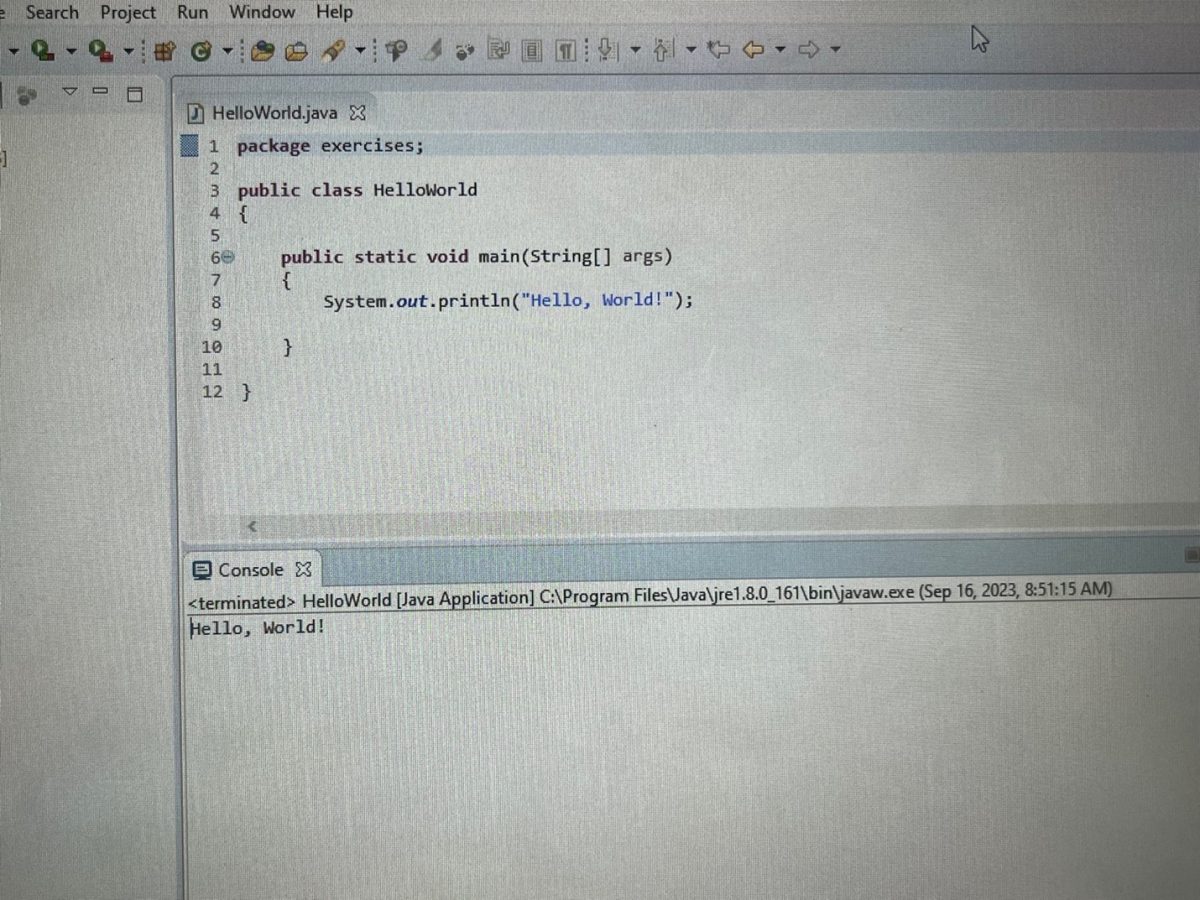The Permanent Effects of Technology on American Society Post-Covid-19
November 2, 2022
After two years since Covid-19 was declared a pandemic , the seemingly never- 1
ending pandemic has an end in sight . Technology became an important tool to stay in touch too
with friends and loved ones. For many of us, our laptops, desktops, and tablets were the new
way to attend school and work from home. Groceries and daily necessities could be ordered
with just a click.
Looking back, it seemed that technology greatly shaped the way we interacted with
others, completed our work, and checked off our to do lists. At the beginning of the pandemic,
so many of us were wondering when the endless video calls and the reign of TikTok would
come to and end. However, a little over two years later, video calls have become the new
standard for work meetings and TikTok has grown even more popular . A Pew Research 3 4
Center conducted April 12-18, 2021 showed that 40% of U.S. adults found new ways to utilize
technology in their lives. Even after the long-awaited end of pandemic life, the way we have 5
incorporated technology into our lives has permanently changed our society.
When schools began to shut their doors at the onset of the Covid-19 pandemic, the
video conferencing platform, Zoom, became widely known for students across the globe. In
2020 alone, Zoom provided free services to over 125,000 schools in 25 countries, according to
a Zoom Blog posted on December 21, 2020. The forced adaption of virtual learning places 6
such as Zoom opened the door for more students to have successful higher education.
According to Jeff Borden, the chief academic officer of the online learning software creator
company D2L, explained how universities can utilize online learning platforms by offering
coursework at various times and formats to meet the diverse needs of certain students.7
Aside from education, technology has impacted marketing, especially for younger
generations. The social media platform TikTok had 39,897,768 U.S. users in October 2019 and
grew to have 91,937,040 U.S. users in June 2020, according to TikTok. Since over 60% of TikTok users belong to Gen Z , marketers have utilized TikTok to appeal to Gen Z such as the 9
Canadian foot wear brand, Vessi. Vessi has used various trends found on the social media
platform to engage with young consumers. Gen Z has also voiced their strong support of 10
social responsibility. According to a McKinsey & Company survey, 70% of Gen Z respondents
try to buy from companies they believe as ethical. Gen Z’s use of TikTok has influenced the 11
way businesses utilize technology to market to consumers, especially young consumers.
Before the pandemic, Uber lost a staggering amount of customers, reporting an
average of 55 million customers each month throughout April to June 2020 despite having 99
million customers during the same period a year earlier . In an attempt to counteract their 12
losses, Uber saw orders more than double for their food delivery business, Uber Eats . The 13
quick adaptation of technology for contactless payments and deliveries helped fuel the
restructuring of companies to stay afloat during the pandemic and change the way they
interact with customers post-pandemic. In the 2nd Quarter of 2021, Uber Eats Revenue
measured to be 1963 million U.S. dollars . 14
Covid-19 not only created immediate changes in our lives with the quick adaptation of
technology, but permanently changed the way American society engages with information
technologies. Throughout the rest of the 2020’s, technology will continue to influence
Americans’ everyday lives.
1 “WHO characterizes COVID-19 as a pandemic.” PAHO, 11 Mar. 2020, https://www3.paho.org/hq/index.php?
option=com_content&view=article&id=15756:who-characterizes-covid-19-as-a-pandemic&Itemid=1926&lang=en#gsc.tab=0.
Accessed 25 Sep. 2022.
“The end of the COVID-19 pandemic is in sight: WHO.” United Nations, 14 Sep. 2022, https://news.un.org/en/story/ 2
2022/09/1126621. Accessed 1 Oct 2022.
Ballentine, Claire; McNeely, Allison. “Employees Are Returning to the Office, Just to Sit on Zoom Calls.” Bloomberg L.P., 1 Apr. 3
2022, https://www.bloomberg.com/news/articles/2022-04-01/employees-are-returning-to-office-post-covid-just-to-sit-on-zoomcalls. Accessed 1 Oct. 2022.
Ceci, L. “Countires with the largest TikTok audience as of April 2022.” Statista, 15 Sep. 2022, https://www.statista.com/statistics/ 4
1299807/number-of-monthly-unique-tiktok-users/#statisticContainer. Accessed 1 Oct. 2022.
McClain, Colleen; Vogels, Emily A.; Perrin, Andrew; Sechopoulos, Stella; Rainie, Lee. “The Internet and the Pandemic.” Pew 5
Research Center, 1 Sep. 2021, https://www.pewresearch.org/internet/2021/09/01/the-internet-and-the-pandemic/. Accessed 25
Sep. 2022.
“Teaching, Learning & Connecting in 2020: Education in an Extraordinary Year.” Zoom Video Communications, Inc., 21 Dec. 2020, 6
https://blog.zoom.us/connecting-in-2020-education-in-an-extraordinary-year/. Accessed 25 Sep. 2022.
Fitzgerald, Madeline. “How Online Learning Is Reshaping Higher Education.” U.S. News & World Report L.P., 15 Feb. 2022, 7
https://www.usnews.com/news/education-news/articles/2022-02-15/how-online-learning-is-reshaping-higher-education.
Accessed 25 Sep. 2022.
Sherman, Alex. “TikTok reveals detailed user numbers for the first time.” CNBC LLC., 24 Aug. 2020, https://www.cnbc.com/ 8
2020/08/24/tiktok-reveals-us-global-user-growth-numbers-for-first-time.html. Accessed 25 Sep. 2022.





























